Herbert Hoover Elected
IAFF wishes newly elected President Herbert Hoover good luck as he assumes leadership responsibilities and urges reforms for several union-related causes.
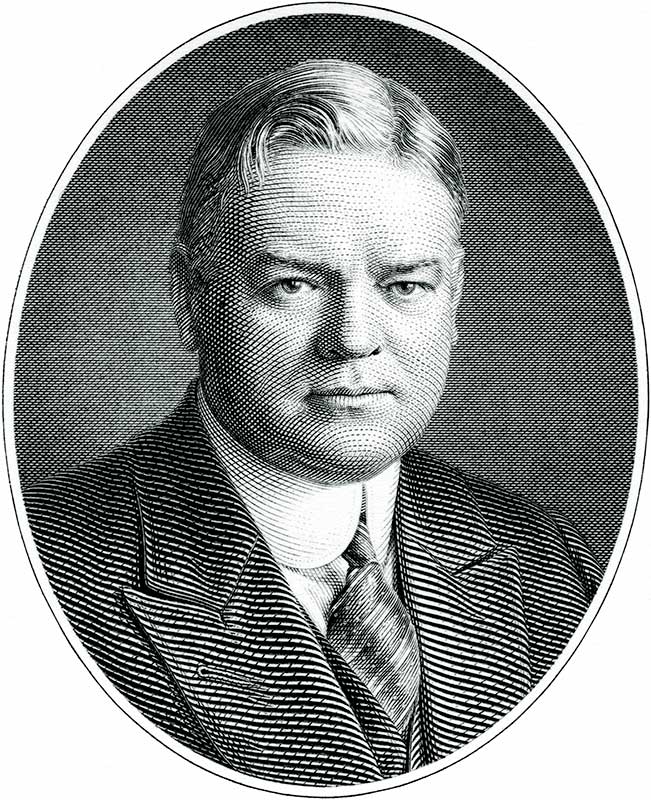
IAFF wishes newly elected President Herbert Hoover good luck as he assumes leadership responsibilities and urges reforms for several union-related causes.

During the Great Depression, firefighting became a coveted and dependable job. Already, the IAFF was improving the lives and working conditions, including helping affiliates in Pennsylvania pass the first Heart and Lung Act, Workers’ Compensation Act and the Occupational Disease Law, establishing some of the first heart and lung legislation. Members who began their careers in the fire service during this era saw advancements including the two-way radio, improved breathing apparatus and more.
The IAFF’s efforts to fight for better wages and working conditions was hampered by the Great Depression, which began with the stock market crash of October 1929, which led to the worst economic downturn in the history of the industrialized world.

Undoubtedly this New Year will bring additional scientific discoveries to render more complete man’s mastery over nature. We have two platoons, three platoons, a day off a week, salaries doubled, departments motorized, the use of radio, aeroplane and many other improvements that 15 years ago were only visions. Who among us have not visions of greater things for the fire service?”
Fred W. Baer, IAFF President (1919-1946)
IAFF members in many cities assisted private relief agencies by organizing the distribution of clothes and other commodities to those in need. The charitable activities of the IAFF during the Great Depression set a precedent of involvement in charitable and community initiatives.

The International Fire Fighter appears in a new “uniform” – larger size and glossy paper improve readability.

In a report entitled, Inadequacy of Men’s Wages, the U.S. Women’s Bureau decries the number of married women who are forced into industry due to their husband’s low wages.
Delegates at the 10th annual IAFF Convention in Halifax, Nova Scotia, resolve that fire fighters shall “not strike or take active part in strikes.”

A new invention called the smoke eater, a hydraulic pump and fan with a large tube attachment to remove smoke and gas, is credited with saving New York City’s fire fighters’ lives.

…without the organized efforts of the International Association of Fire Fighters these beneficial changes would not have been secured. The younger men who are now coming in the department and our organization have little conception of the immense improvements which the International has effected.
Albert Higgin, 6th District Past Vice-President
Minister of Labor Peter Heenan grants 18,000 employees of the Canadian government a 44-hour work week.
The IAFF urges Congress to not increase government taxes on workers, despite a $1 billion deficit faced by the U.S. Treasury at the end of the fiscal year. Instead, the IAFF supports raising income tax rates for upper income brackets, as well as an increase in corporation and inheritance taxes.
Four Chicago fire fighters lose their lives in a tunnel disaster. On April 13, 1931, a fire in the Sanitary District tunnel in Chicago caused a gas-filled death trap. Fire fighter and Local 2 member Irving Strohm went down in the tunnel 15 times to rescue men and faced a choking and blinding death. All told, 11 men lost their lives, including four fire fighters, and another 54 were injured. The fire deaths were due to “fire of unknown origin,” and carbon monoxide poisoning was deemed as the direct cause.

The IAFF sponsors the first radio program on coast-to-coast hook-up. More than 70 stations in different cities carry the program. The focus of the broadcast is to urge fire fighters in the United States and Canada to advocate for an eight-hour work day.
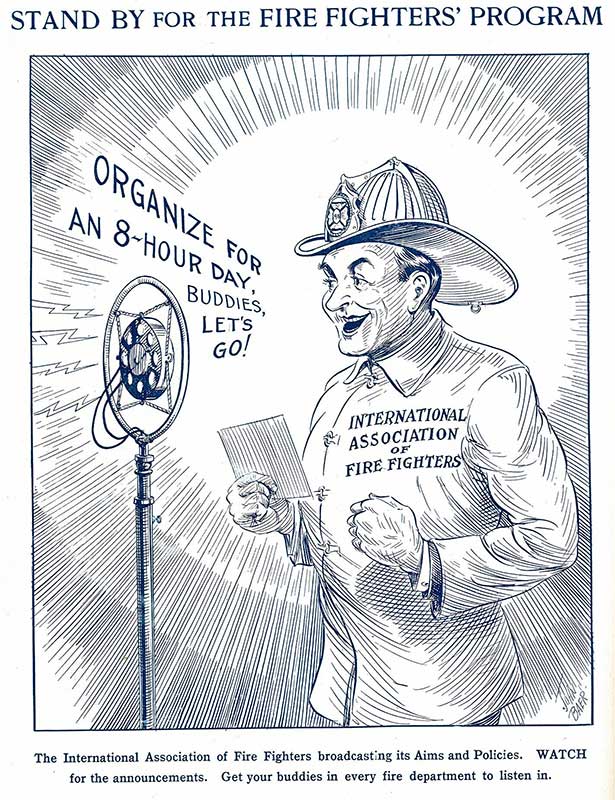
The IAFF publishes methods to prevent head colds through sound eating, healthy habits and avoiding others with bad colds.
IAFF membership increases by more than 6,000 members since 1936.
Delegates at the 11th annual IAFF Convention, held in San Diego, California, adopt a resolution authorizing the IAFF to take every legal and constitutional means to combat the cutting of wages, curtailment of employment and lengthening of hours of labor.

The IAFF publishes article on the proper use of axes and good axemanship.
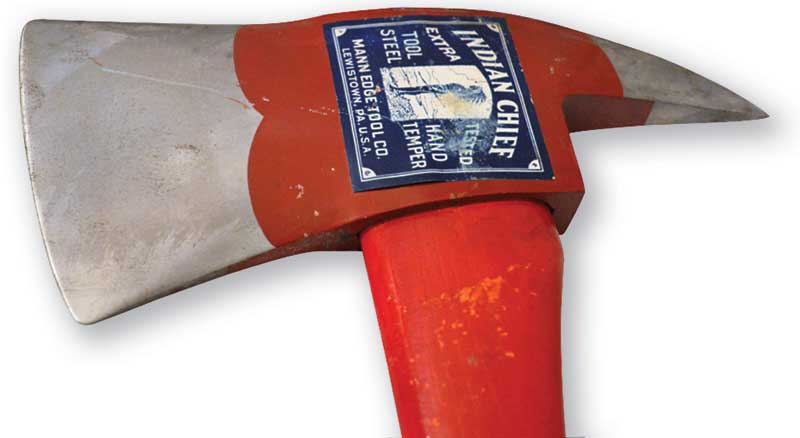
During the 11th annual IAFF Convention, delegates have time to attend the Olympic Games in Los Angeles.
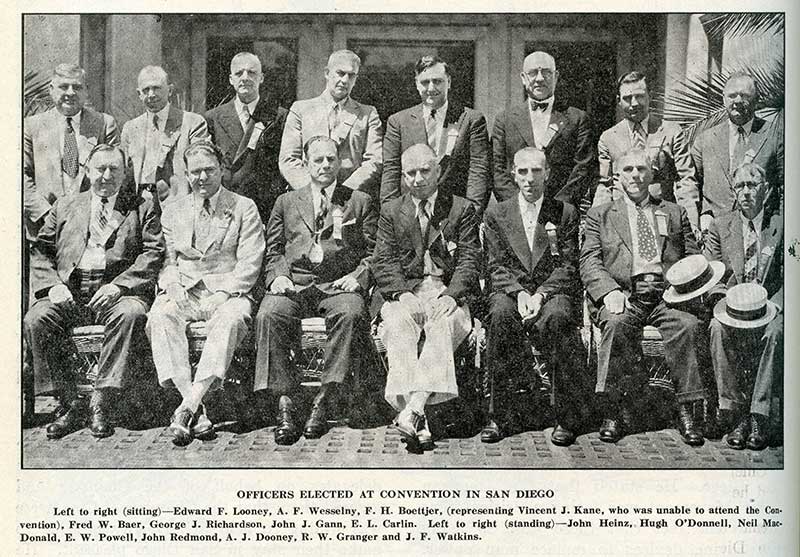
Delegates at the 11th annual IAFF Convention pass a resolution opposing detailing firemen to traffic duty, as many cities have done in the past.
Delegates at the 11th annual IAFF Convention resolve that whenever there exists two or more locals, every effort should be made to form a state or provincial organization and secure a charter from the IAFF.
At the AFL Convention, delegates unanimously approve adoption of the resolutions introduced by IAFF President Fred Baer and IAFF Vice President John P. Redmond addressing fire prevention, AFL and IAFF cooperation opposing cuts in salaries and working conditions and an eight-hour day for all fire fighters.
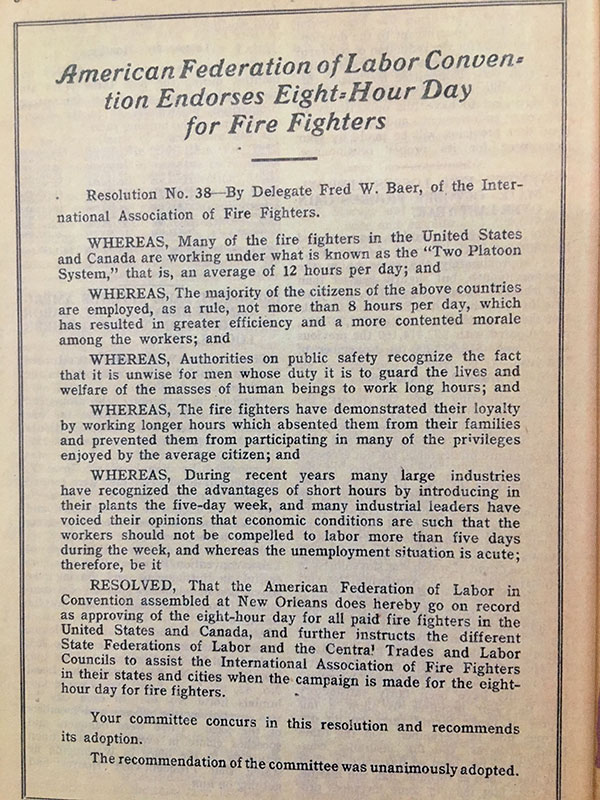
The National Industrial Recovery Act is signed into law. IAFF Secretary-Treasurer George Richardson contends that there is room for improvement in the New Deal as it relates to fire fighters, and resolves to fight to maintain the type of fire services that the public pays for and is entitled to receive.
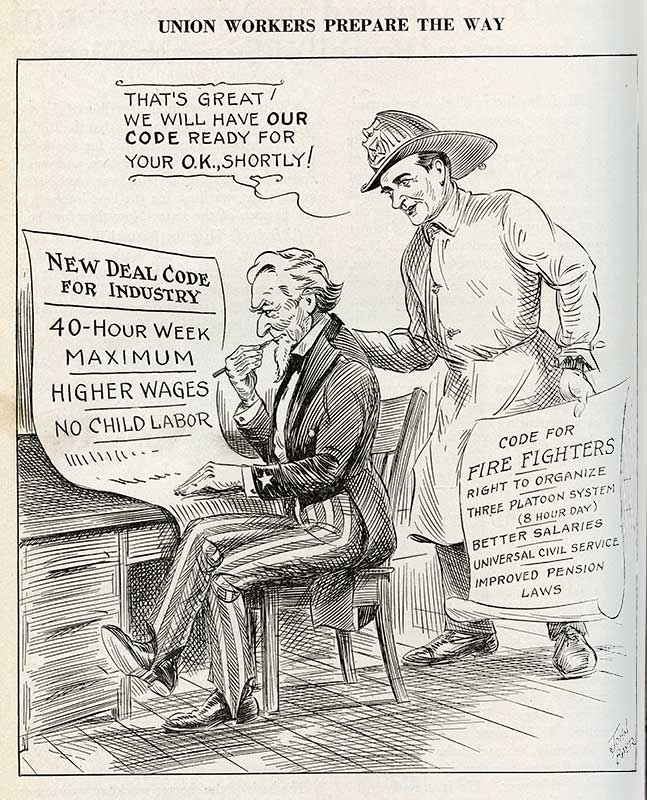
Improvements in working conditions for fire fighters have never just ‘happened’ – and they will not ‘happen’ in the future. We must continue to work, as we have in the past, for conditions and salaries to which we are entitled.
Fred W. Baer, IAFF President (1919-1946)
Twenty-four states, or half of the unions representing 42 percent of the total population, possess old age pension laws.

The IAFF makes original drawings of all the cartoons which have been published in the International Fire Fighter available to locals on a first come basis.
The National Industrial Recovery Act makes fire station repairs and improvements possible through the Civil Works Administration. Across the nation, hose racks have been installed, drill towers are under construction, engine houses have been repaired and painted, fire alarm boxes and fire hydrants have been painted.
The IAFF opposes attempts by the Civil Service Repeal League to abolish national, state and local Civil Service.
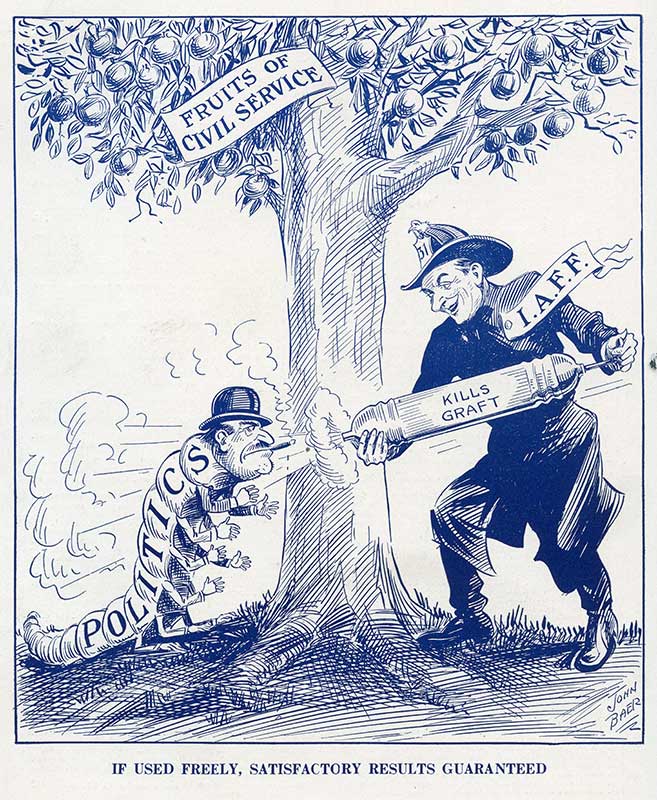
The constitution of the IAFF specifically provides that this organization shall not be used for the promotion of candidacy of persons seeking public office. The members of our association, however, are able to decide for themselves which candidates are their friends and, therefore, support them accordingly.
Fred W. Baer, IAFF President (1919-1946)
Three Toronto fire fighters lose their lives extinguishing a fire aboard a moored oil barge. On July 23, fire fighters received a call to extinguish a fire which had occurred aboard the oil barge “En-Ar-Co,” moored in the newly reclaimed industrial oil area of Toronto, also known as the ships’ turning basin. After a three-hour fight against a virtual inferno, their efforts to extinguish the blaze were unsuccessful. Without a moment’s warning, an explosion occurred, hurling the fire fighters into the air and dropping them, unconscious, injured and maimed into the flaming hold of the barge or into the waters of the basin. Twelve fire fighters were thrown, three of whom were killed and 10 critically injured or painfully burned.
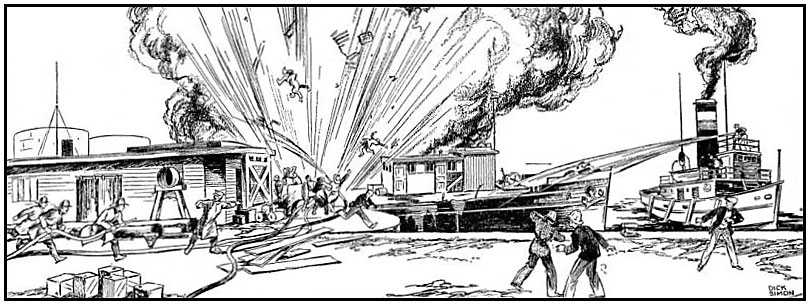
The IAFF recognizes the approaching golden anniversary of the modern brass fire pole, first installed in 1885 in New York. “As a time-saver, it is a world-beater. The most agile of men can’t fly down one or two flights of stairs, but they virtually fly down the pole. In the average city, three rounds of an alarm are sent over the gongs. On the average three-numeral signal, the firemen rarely ever hear that third round. With the magic aid of the pole, they’re already out in the street before it commences.”
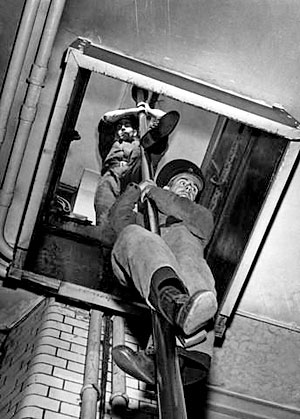

Washington becomes the first state to enact civil service legislation patterned after the Model Civil Service Bill drafted by the IAFF. Several other states consider similar legislation.
The Wagner Connery Labor Disputes Bill, signed into law by President Roosevelt on July 5, affirms the right of working men and women to form labor organizations and bargain collectively through representatives of their own choosing.
The bill states that “a better relationship between labor and management is the purpose of this act.” It also establishes a National Labor Relations Board to hear and determine cases in which it is charged that this legal right is abridged or denied. This independent, quasi-judicial body will not act as a mediator or conciliator in labor disputes.
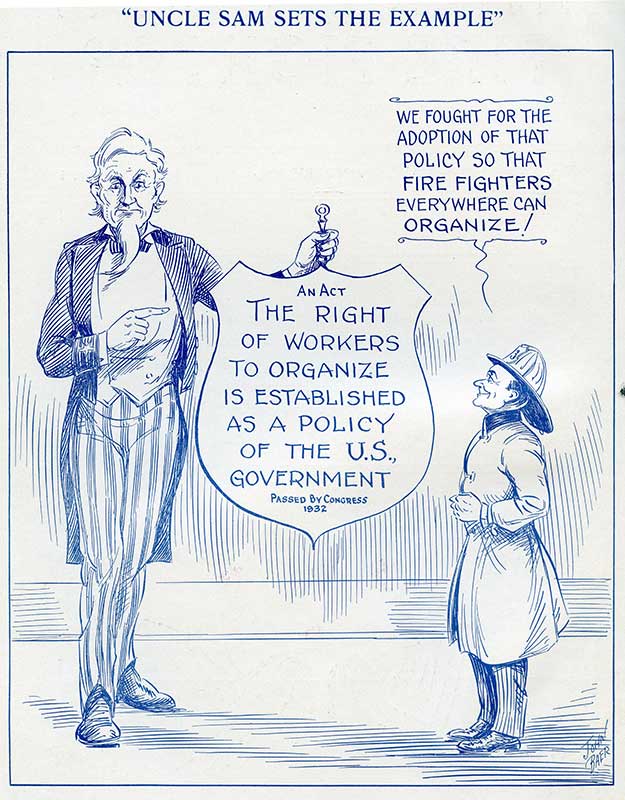
Montana becomes the first state in the country to establish an eight-hour workday for fire fighters.

The IAFF publishes a list of 83 cities in which salary increases or restorations of former salary reductions occurred in fire departments nationwide.
The IAFF reports that 35 states have pension laws and six have unemployment insurance.
The IAFF describes the Social Security Act, passed in the Congress, as having three major purposes: unemployment compensation, old age pensions and pensions for the blind and aid for dependent children.

The IAFF publishes a comprehensive article about medical treatment of burns or “fire poison.”
“Tannic acid is used as a therapeutic measure in the treatment of burns, and has generally been accepted as the best method of treating the wound if the patient is seen within the first 48 or 72 hours after the injury. While it is not imperative that the tannic acid solution be sprayed, this is perhaps the most sanitary method of handling it.”

Two Fort Wayne, Indiana, fire fighters are killed in ladder accidents. A drill master in charge of instructing fire fighters in a series of ladder drills raised the ladder for the last time on that training day. The men ascended the roof, and upon beginning their descent, one fire fighter fell to his death when a gust of wind came and carried the ladder away from the building. The other fire fighter on the ladder fell as well, was knocked unconscious and later died. Their comrades on the roof and street were helpless to offer any aid to the two fire fighters.
The IAFF publishes present salaries being paid in fire departments in the United States and Canada.
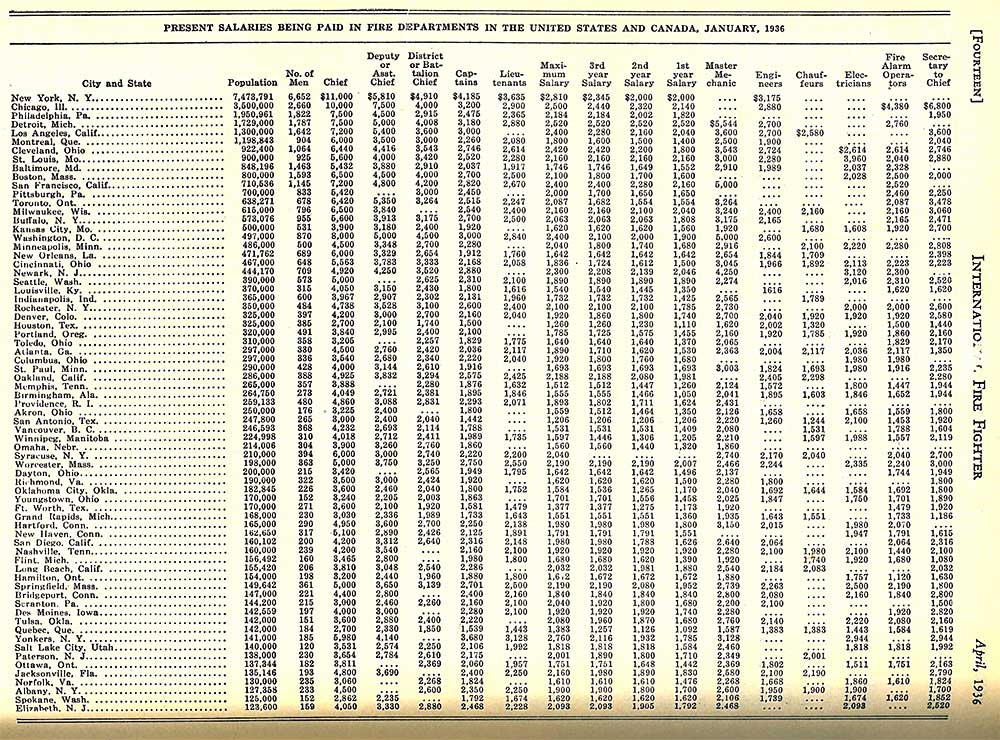
The IAFF publishes a list of fire protection courses, and laments that there is comparatively little fire protection engineering instruction available to students in universities and technical schools in the United States and Canada.
Disastrous floods in Kentucky, Ohio, West Virginia and Indiana require fire fighters’ monumental efforts to keep the public safe. In Cincinnati, Ohio, fire fighters had no water in the mains in which to fight fires. With the waterworks pumping station out of service and reserve water supplies greatly limited and dwindling fast, it was necessary to fight these fires with water from tank trucks that accompanied the fire apparatus. The members of the Cincinnati Fire department were on continuous duty for two weeks, and when they returned to their homes, many of them found that they had lost everything. In Paducah, Kentucky, fire fighters had to fight explosions during the flood. The rising water shut off the electrical current and telephone system and the department was without any means of communications until watch stations were established on the roof of the tallest building in the city. These fire fighters worked 24 hours a day from January 19-February 24.

The IAFF reports that “Smokey Scott” will premiere in the September issue of the International Fire Fighter featuring a series of drawings about the daily lives of fire fighters, past and present.

The IAFF publishes rising trends in fire fighters’ salaries.

Forty new locals affiliate with the IAFF during fiscal year 1937 – nearly one per week.


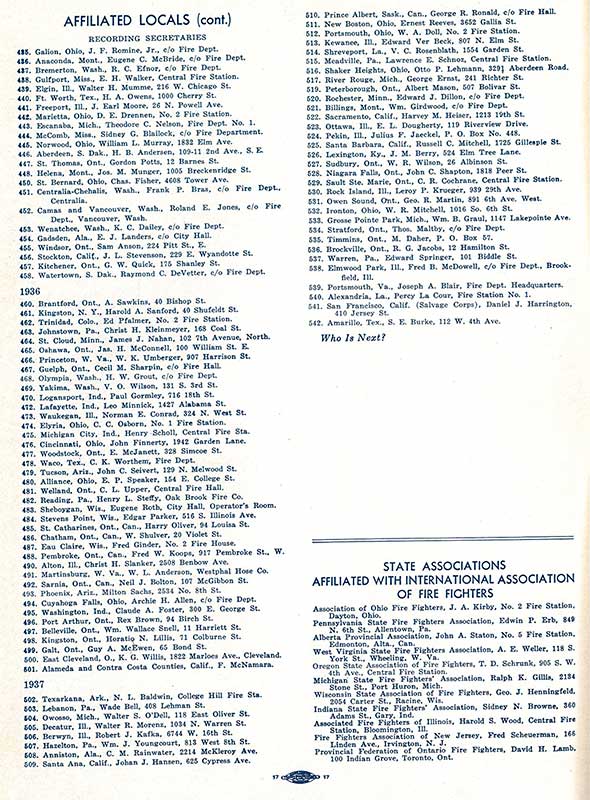
The first National Fire Fighters’ Tournament is held in Chicago, drawing 125,000 spectators to witness an unprecedented array of firemen and equipment.

The IAFF lists the 11 state and provincial associations affiliated with the IAFF.
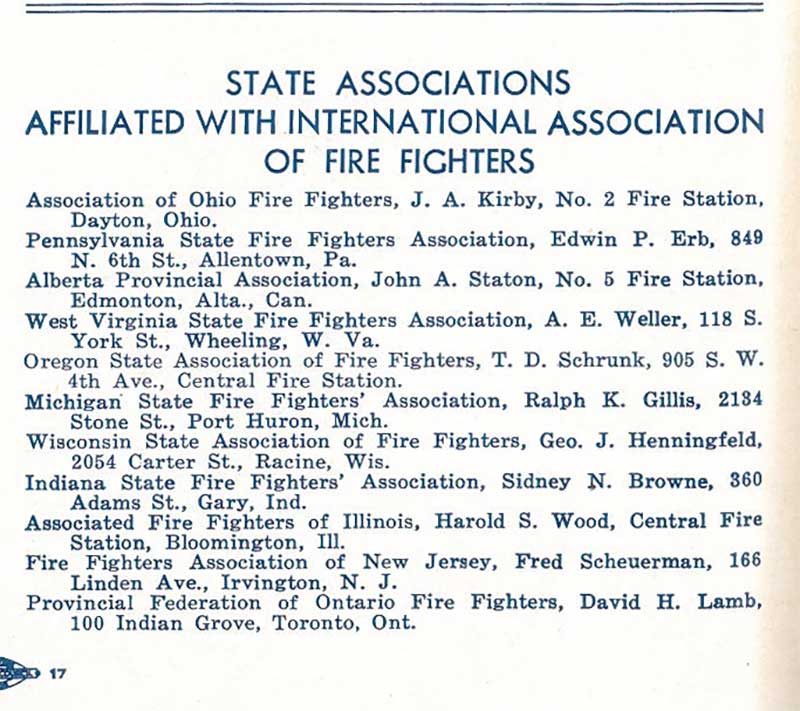
The International Fire Fighter publicizes the sale of IAFF emblems, including a watch, button and grave marker.
The federal government taxes fire fighters retroactively on their salaries and pensions earned for every year from 1926 to 1937. Delegates at the 1938 IAFF Convention resolve to overturn this decision through support of a bill to be introduced in the 1939 U.S. Congress.
The Federal Department of Justice and the Treasury Department maintain, as a result of a U.S. Supreme Court decision on May 23, 1938, that the federal government has the power to tax the incomes of all state, county and city employees. All members will be subject to a tax on their incomes from this time on, and will also be forced to pay retroactive tax on the salaries which they earned in fire departments for every year from 1926 to 1937. The federal government also now has the power to tax all incomes derived from pension funds, or similar funds, and the retroactive feature would apply to such incomes, as well.
The IAFF accepts membership in the newly formed Advisory Committee for Vocational Training for Firemen, which was convened by the U.S. Commissioner of Education.
The National Association of Manufacturers spends $500,000 on radio, newspaper and film ads to discredit the rising tide of unionism.
According to Max H. Skolnick MD, trauma is seen as a factor in dementia praecox, Pott’s disease and pulmonary tuberculosis among fire fighters. The first article in a series on heart disease among fire fighters is published in the International Fire Fighter.
“Although dementia praecox is a very common occurrence, and it is easily recognized by its appearance and subsequent behavior, it nevertheless presents in its entirety, many baffling details. The etiology is as yet only incompletely solved. Adding to this complexity, trauma is found to be a factor in a small percentage of cases.”
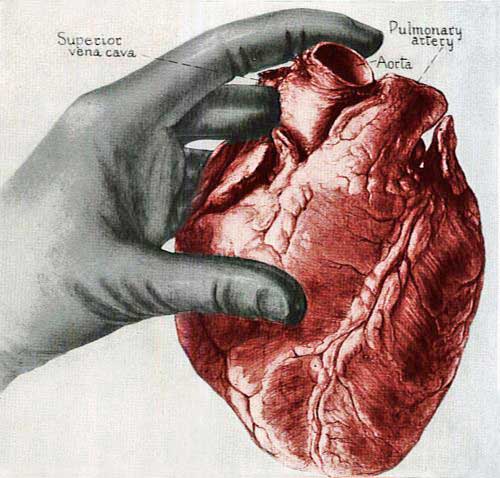
IAFF membership reaches 23,000.
The two-platoon system (almost universally in effect), the eight-hour day (which is being more widely adopted all the time), state minimum wage laws, state civil service laws, strengthened and improved pension systems, and even a five-day, 40-hour week are all things that have been secured and are being secured in a constantly increasing number of cities, as a result of affiliation of the fire fighters of the North American continent with the organized labor movement.
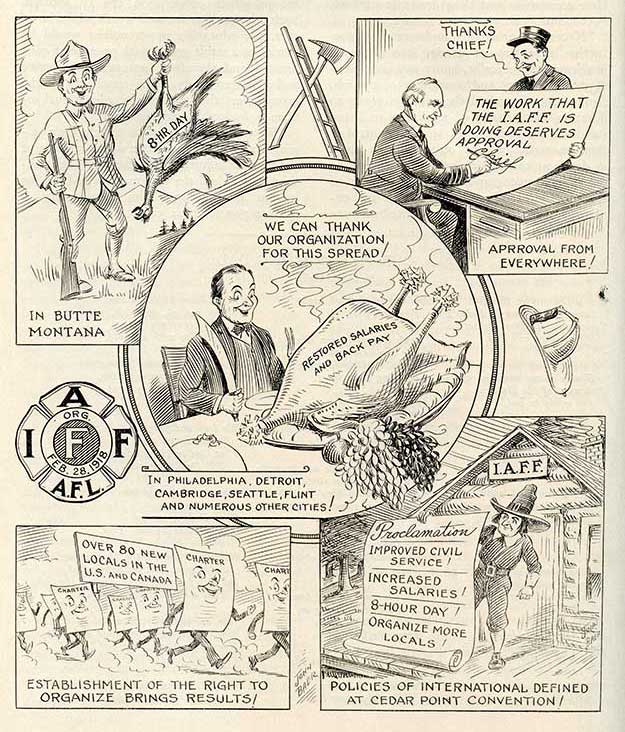
Delegates at the 1938 IAFF Convention approve the Model Fireworks Act and ask the various state legislatures to enact this into law.

The IAFF sends a survey to 600 fire chiefs across the nation to ascertain compensable illnesses among fire fighters. Results show that only one-half of localities responding possess the capacity to recognize and compensate medical illnesses which result from firefighting duties. These include heart disease, tuberculosis, pneumonia and arthritis, among others.